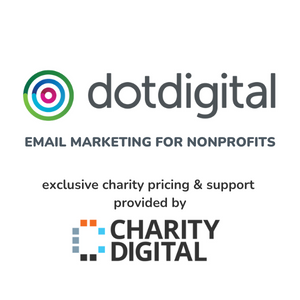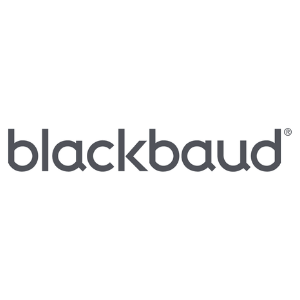Insights
INSIGHTS
All Topics
Digital trends for 2022
10 Jan 2024by Ioan Marc Jones
We look at ten of the digital trends that are set to dominate 2022 and offer some essential advice and guidance on each trend
The pandemic has settled, with only occasional terrifying new variants arriving, and the sense of doom has dissipated, at least a little. For charities, that means in-person events and face-to-face fundraising have returned, with all the authenticity and joy that follows.
2022 is a time when charities need to review their processes and question next steps. What lessons can they learn from the previous two years? What digital skills can they take from the past, apply to the present, and grow in the future? Basically, when it comes to digital, what should charities do next?
One answer is to explore the digital landscape and learn from the community. Charities should look at digital trends in the sector – and beyond – to see what might prove beneficial.
They need to look at long-term and lasting trends, such as the importance of digital strategy and the shifting landscape of social media, and short-term and emerging trends, such as using virtual reality (VR) for service delivery and fundraising with non-fungible tokens (NFTs).
In short, charities need to stay ahead. And we can help. In the following article, we will explore ten of the digital trends set to define 2022, offering charities advice on how to stay ahead with each.
Skip to: Time to prioritise stability and strategy
Skip to: The increasing inevitability of the cloud
Skip to: Service delivery through VR
Skip to: More investment in automation and AI
Skip to: The importance of cashless and contactless
Skip to: Staying ahead of the curve with NFTs
Skip to: Risk-aversion and new interactions on socials
Skip to: Email marketing remains essential
Skip to: The year of hybrid everything
Skip to: Do not forget cyber security
Time to prioritise stability and strategy
The first and most important part of 2022 is the need for stability. Charities have been moving quickly since the pandemic arrived, adapting to digital and ensuring fundraising and service delivery continued unimpeded. That sense of intensity will fade in 2022, leaving charities with time to plan and stabilise.
Stability should be the key term for charities in 2022. It’s time to find our feet, settle, and think in the long-term. And that stability depends on planning. Indeed, it depends on developing a digital strategy.
The strategy should start with defining your present situation, asking yourself where you would like to go, then setting some realistic targets. Remember, your goals should work alongside your mission, motivate your team, and they should be quantifiable, so you can judge their effectiveness in practice.
A good place to start is to ensure your goals meet the five-point SMART criteria. So, ensure that all your strategy goals are Specific, Measurable, Achievable, Relevant, and Timed.
One you’ve defined your initial goals, you can start to develop further. Ask yourself:
- Who will be involved at each stage – designating roles for team members, leaders, volunteers, etc
- What you need to complete at each stage – examine current resources, projected resources, etc
- Where each stage will be complete – on which platforms, which channels, which socials, etc
- When each stage will be completed by – set timings, flexibility for timings, agile working, etc
- Why you’ve set the above – determining factors, wider society, economic environment, etc
Charities should constantly build on digital strategies, based on successes and failures. An effective digital strategy is a moving target, ever evolving depending on the demands of the day. Your approach should evolve, too, moving and adjusting along with trends, patterns, and data.
Charities should define their digital strategies in 2022 and focus on finding stability. Many of the below trends may form part of that strategy and may indeed help you find a sense of equilibrium. So have a read, take inspiration, plan ahead and stay ahead in 2022.
The increasing inevitability of the cloud
The Microsoft offering with Charity Digital Exchange will change on 4 April 2022. The changes are propelled by Microsoft’s goal of better aligning philanthropic offers to the comprehensive capabilities and security that Microsoft Cloud provides.
Microsoft, as with many other tech companies, have started moving away from in-premise solutions. Cloud-based storage options have proved increasingly important during COVID-19 and that importance is unlikely to dwindle.
Cloud-based storage options have myriad benefits, including:
- Universal access: Staff can access the cloud from any location, which has proved particularly important during COVID-19 and the shift to remote and hybrid working
- Greater mobility: All tech devices can access the cloud, which means users do not have to remain on one device and can be free to move around
- Improved collaboration: The cloud provides ample opportunity for real-time collaboration from all members of the team, which boosts productivity and morale by giving employees a voice
- Cost reduction: Cloud computing broadly limits costs due to pay-as-you-go systems rather than one large expenditure that can prove challenging to many charities
- Loss prevention: In-premise solutions mean that data is secure only in the singular device, which can prove risky through accidents, malfunctions, or cyber breaches
The benefits are obvious, which is why the cloud has become so popular. But charities should also be aware of several risks, including cyber attacks through social engineering, where criminals enter the cloud by retrieving credentials from people within the charity or business.
The cyber risks still exist – and they always will, regardless of the solution you choose – but there are many steps that charities can take to mitigate the risks.
Another risk is dependency. By depending on a third-party, you essentially entrust them with certain aspects of cyber security, as well as general day-to-day operations. If the third-party faces a blackout, malfunction, or cyber breach, that will effect your operations through no fault of your own.
And finally, there are questions over the environmental impact of the cloud. It is estimated, for example, that the IT sector is responsible for up to 2.8% of our global greenhouse gas emissions.
Cloud data is stored in huge data centres filled with “thousands of hard drive-bearing racks using a mind-boggling amount of energy” Data centres, which make up the cloud, are the worst offenders for greenhouse gases in IT, constituting up to 45% of emissions for which the sector is responsible.
But, thankfully, there are tools charities can use to mitigate the impact of the cloud. The open source Cloud Carbon Footprint tool, a collaboration created by Thoughtworks and a group of innovation partners, is free to use and can help organisations measure, monitor, and reduce carbon emissions.
Overall, though, the cloud still seems to be increasingly popular and suppliers are moving more and more towards cloud-based options. In short, while in-premise solutions remain popular for charities, the cloud is dominating an increasing section of the market.
For more information about changes on the Charity Digital Exchange, check out our article: Important changes to the Microsoft donation program
Service delivery through VR
Virtual reality (VR) saw a massive uptick during COVID-19. The reason should be obvious: with the decline of in-person support, charities had to get creative – and their creativity relied on digital.
VR for service delivery is going to be a defining trend of 2022. And many charities have already noticed the benefits. The NSPCC, for example, has been pioneering the use of a computer simulation programme to help tackle child abuse.
The NSPCC teamed up with gamification provider Attensi to create an immersive simulation for people working with children who may be victims of abuse. Talk To Me is a free-to-use online simulation that aims to build confidence in adults working with children to talk about challenging issues.
It can be accessed through web browsers and involves fictional young characters created with 3D modelling that mimics body language and facial expressions. Real actors have voiced the characters who are involved in scenarios that users are guided through. In addition, real-time feedback is presented to users depending on how well they have earned children’s trust.
Another way that charities are using VR is by offering virtual tours. Acorns Hospices is using VR headsets to give a reality tour of their facilities with the intention of easing children’s minds. The tour aims to show children how they will find comfort and a home-from-home when they visit.
Similarly, Great Ormond Street Hospital is also offering a 360-degree tour of wards to put young patients at ease prior to their visit. Its tour takes children through the hospital’s facilities and surgical theatres, as well as its play and sensory rooms.
VR is providing necessary services to users unable to attend in-person. And the increasing affordability of VR means more charities are able to get involved, helping them to overcome geographical limitations, excessive expenditure, lack of reach, and so much more.
For more information, check out our article: How virtual reality has helped charities.
More investment in automation and AI
Automation may prove pivotal to your 2022 digital strategy. And the most obvious place to start when it comes to automation is artificial intelligence (AI). Charities have already started embracing AI, due to gaps in services during the pandemic and a general need to fill that void.
The best example is the use of chatbots. Chatbots use natural language processing to make life easier for all involved. The chatbots can minimise customer services interactions, for example, by answering basic questions without the need of a human. They can also provide donors with information, lead people in new directions, and even promote fundraising activities.
Mencap have put an ‘Understand Me’ chatbot on their website, for example. The chatbot guides users and donors through a conversation with Aeren, who was born with a learning disability. The chatbot gives users information about her life, while also providing statistics on learning disabilities in the UK.
Another example, Is This OK?, is the result of a partnership between Runaway Helpline and Childline, with funding provided by Children in Need. Targeted at those aged between 13 and 18 looking for support or feeling pressured or confused, the chatbot asks some simple questions before offering useful information or connecting the young person to a real person for a conversation.
The main benefit of the chatbot – and a benefit of most AI and automation – is that it provides support round-the-clock, whereas humans are broadly limited to working hours. The chatbot can be present all day, every day, with no breaks, offering support and guidance, or seeking donations.
For more, check out our dedicated article: How charities are using chatbots.
Chatbots are an effective use of AI. They show some of the early possibilities of AI, but there are plenty of other possibilities, all of which may be worth exploring. Charities should do research, exploring deep learning, data ingestion, digital assistants, and anything else that might prove beneficial.
Find out more about the debates around AI: Common misconceptions about AI.
The importance of cashless and contactless
This one is all about fundraising. We can talk about the latest digital trends, about how to improve operations, about using tech for marketing, but ultimately charities depend on donations. And charities really need to make the act of donating as easy as possible.
Here are some interesting facts about fundraising:
- Charities in the UK reported a 35% increase in online revenue in 2020
- According to Blackbaud, the tech-savvy Gen X donate more frequently than other generations
- According to the CAF, there has been a sustained increase in cashless giving since March 2020
- According to Non-Profit Source, 25% of people donate using mobile devices, mobile devices account for 57% of all Internet traffic, and mobile donations continue to grow rapidly
The core message is clear: the brave new world is digital – and that includes fundraising. Charities need to ensure that they offer the best new payment solutions, prioritising cashless and contactless.
All charities should keep an eye out on the following:
The above is not an exhaustive list, but just old and new methods that charities can use to receive money from donors. Each method has a corresponding article that can help charities take advantage.
Charities need to look at the above and decide which they need to offer. Charities of the future can no longer afford to rely on tin-buckets, or even just POS devices. More and more fundraising options rise every year, making donations easier, and too many charities jump on the trends too late.
Our advice is to constantly follow the latest cash and contactless trends and question how you can incorporate them into your fundraising.
For more fundraising trends, check out our article, or see a video we made below.
Staying ahead of the curve with NFTs
Talking of the latest contactless fundraising trends, let’s focus on non-fungible tokens (NFTs).
What exactly is an NFT? Well, the simple answer is that an NFT is a unique and non-interchangeable unit of data, that lives on a Blockchain that certifies ownership. An NFT can be anything digital, including art, music, virtual objects from video games, social media posts, and so on.
NFTs caused a lot of noise in 2021, when Jack Dorsey, now-former CEO of Twitter, sold the first ever Tweet as an NFT for $2.9 million. NFTs have been rising – and quickly – throughout 2021, with all mainstream websites and services paying a lot of attention. And now many artists, bands, brands, and celebrities are getting on-board with NFTs, with some raising funds for charities.
Dorsey, for example, donated the money from the sale to GiveDirectly, a non-profit organisation that supports people affected by COVID-19 living in extreme poverty in Africa and the US.
In March 2021, Mike Winkelmann (also known as Beeple) sold an NFT for $69 million at Christie’s – the first purely digital artwork offered at the auction house. And he didn’t stop there. He then sold a piece called ‘Ocean Front’ as part of the Carbon Drop initiative, raising $6 million for the Open Earth Foundation to combat climate change. Winkelmann expressed concern, like many other artists, that the use of Blockchain is particularly bad for the climate.
Charities do not need to simply sit and hope that an artist, celeb, or influencer is simply going to donate some money made from an NFT. They can be proactive. So, for example, they could collaborate with an ambassador, ask them to create an NFT, and sell the item for funds.
Alternatively, charities can approach existing NFT creators and ask them to get involved with the charity. If a creator wants to donate auction proceeds to your charity, they can auction it off using their usual preferred platform.
Another option is to use a platform like The Giving Block, which helps charities to get set up to accept crypto donations, as well as actively fundraise crypto. It already supports over 200 US non-profits.
Or, for the more adventurous charities, you could create NFTs using your own creative assets. Take anything – your logo, your first Tweet, a picture of your charity, artwork from the CEO, whatever sells.
The charity Covid:aid did precisely that. The charity auctioned off its logo as an NFT, offering the winning bidder the chance to be the world’s first founding charity crypto-philanthropist. The auction was held on Foundation, and though it only raised a small amount of money, it demonstrated how charities can think creatively about using NFTs to tap into new audiences and create a buzz.
NFTs are still new, still exciting. They are part of a digital terrain that charities tend to avoid – ostensibly complex, seemingly confusing, perhaps even risky. But NFTs are simply an opportunity to raise more money, so do your research, get involved early, and lead the way for other charities.
For more information, check out the basics: An introduction to NFTs for charities
For information on fundraising: NFTs for good: how charities can fundraise with NFTs
Risk-aversion and new interactions on socials
Social media is a world of its own. Our broad advice is to always pick the platforms that work for you, keep an eye out on emerging platforms, and don’t always follow the crowd. But for specific trends, we noticed two social media trends that we think will dominate the charity sector in 2022.
Caution around tech monopolies
The first thing that we’ve noticed is a growing aversion to tech monopolies, particularly following the reports from whistleblowers on tech giants Facebook and the blackouts on Facebook, Instagram, and WhatsApp in the later stages of 2021.
The whistleblowing revealed that Facebook (now Meta) had perpetuated a culture where profit was prioritised over responsibility. The Facebook Files case covered a lot of ground, but the key points were as follows:
- The ‘cross check’ programme made high-profile individuals exempt from standard moderation
- Research from Instagram was buried, despite it showing the platform’s profoundly negative impact around teenage girls and self-image
- Past newsfeed algorithms had pushed divisive political content
- There has been a broad failure to counter misinformation
Facebook claimed that the accusations were simply not true. But, even without such accusations, the constantly negative stories around Facebook shows that charities need to be cautious about using the tech giants, especially if they rely on them for fundraising practices. On top of that, the platform has also faced blackouts, which adversely affect charity fundraising.
So, what should charities do? As Kirsty Marrins and Zoe Amar argue in different articles for Charity Digital, diversification is key. While Facebook and other big tech platforms are often essential for raising funds, charities need to ensure they are not reliant on any singular platform, in the same way that they should not rely on any singular income stream. In short, diversifying is a form of risk aversion.
Marrins offers some advice for charities to diversify, including building your email list, investing more in ads, and improving your SEO. Amar adds that charities can also take stock of your digital tools, devise different advertising plans, boost their newsletters, and talk to other charities.
Charities can also look to other social media platforms – such as Pinterest, Reddit, Snapchat, YouTube, TikTok, LinkedIn, and others – and raise funds through them. The key is to limit dependency, while also prioritising social media platforms that conform to your charity’s needs.
The rise of Clubhouse and Spaces
Socials have become less social in recent years. The focus has been on the posting, not the interaction, and many of the older social networks are starting to adapt further towards actual interaction.
A new player on the scene, Clubhouse, has had a significant impact on social consumption, particularly in the charity sector. Founded in 2020 by Paul Davidson and Rohan Seth, Clubhouse is an audio-only social media app that encourages conversation and discussion – it is purely about social interaction.
Clubhouse is organised into rooms and a feed known as the ‘hallway’ or ‘corridor.’ There are also ‘clubs’ hosting regular rooms that you can follow.
A similar platform followed from Twitter, named Twitter Spaces. Clubhouse and Spaces overlap, but some of the features differ. Spaces does not offer a place to show which Spaces are happening at any given time, for example, nor does it offer analytics, but a Spaces dashboard is coming soon.
The rise of truly social and interactive platforms is an interesting trend, which is reminiscent of the livestreaming trend in 2020 and 2021.
Livestreaming could be read as a reaction to the inauthenticity of posts – written posts are often planned, video posts are often filmed several times, images had myriad filters, etc. Livestreaming seemed authentic because you existed in the moment – you broadly interacted in real-time.
And all the major socials noticed the trend and soon offered their own version – even Twitter, who fleetingly introduced their Fleets, before taking them down.
The discussion-based platforms offer real-time interaction above all else. Clubhouse have led the way, quickly followed by Twitter Spaces, and we would not be surprised if other major players follow.
For more information, check out our article: Should charities join Clubhouse?
Or perhaps find out more about Spaces: How charities can use Twitter Spaces
And to consider the future of charity social media, check out our recent podcast:
Email marketing remains essential
Email marketing is the act of sending emails to users with a specific purpose, whether that’s to sell products, raise awareness, fundraise, or promote an event. It is perhaps the most popular and most successful form of marketing, which charities of all shapes and sizes should be using.
Email marketing results in one-third of online fundraising revenue, according to Salsa. That is not surprising. The world has more than 3.7 billion email users, according to Statista. There are three times as many email accounts as there are Facebook and Twitter accounts combined.
Organisations are six times more likely to get a click-through from an email than they are from Twitter. And 59% of marketers claim that email is their greatest return on investment, according to Emma.
Emails marketing has huge fundraising potential. Good email marketing allows charities to make a personalised, optimised appeal to hundreds or thousands or even millions of potential donors, all with a little preparation and the swift click of a button.
And email marketing software is not particularly costly, either. In 2022, as email marketing continues to grow, we advise charities to invest. Follow the trend and stay ahead of the curve, spending a little money now to secure larger funds in the future. Prioritise the future.
Find the best email marketing software for your charity. Here are some potential options to get you started – remember to look at each and carry out your own research:
DotDigital
DotDigital allows teams to design and send emails at low rates, which are secured by donations and discounts exclusively offered by Charity Digital Exchange. The platform provides tools such as integrated automation, segmentation, reporting, and personalisation so charities can make the most of their time and effort.
Mailchimp
Mailchimp is one of the most popular options. It allows you to build emails in plain text, customise with code, or use one of the pre-existing templates. The templates are designed via Mailchimp’s drag and drop tool, which is versatile and easy-to-use. Mailchimp offers the integrated image editor feature, which means you can build a full email without having to leave the site.
ActiveCampaign
ActiveCampaign is a versatile platform that prides itself on automation. At the heart of the platform is an automated builder, which is a canvas for building marketing sequences across channels. ActiveCampaign’s design enables anyone – regardless of skills, expertise – to craft powerful email automation sequences from scratch or by importing one of their 500+ automation recipes.
GetResponse
GetResponse allows you to create strong and attractive emails, access analytics to track their performance, make use of the strong list management services, and send transactional emails. GetResponse also offers a ‘conversion funnel’ that charities can use to build pages, automate, sell products, and manage customers.
SendX
SendX offers a drag and drop feature that makes the platform builder easy to master. SendX ensures you don’t have to build the email from scratch, as you can use one of many templates that suit your brand. SendX is affordable and intuitive, allowing users to design, schedule, and track email marketing campaigns. You can upload an opted-in email lists, create reports to measure clicks, and much more.
For more information, and more platforms, check out: The best email marketing software of 2022.
The year of hybrid everything
Let’s start with some good news. Physical events and fundraising will return in full steam throughout 2022, complete with nibbles and in-person talks, perhaps even the occasional handshake.
The better news is that digital events and fundraising will continue, complete with pyjama bottoms and dressing gowns, Zoom and Remo. The future of events and fundraising is hybrid.
Indeed, everything is going hybrid. We have hybrid fundraising, hybrid service delivery, hybrid events, hybrid working. The key trend for charities is to equip themselves with right tech to embrace hybrid.
The benefits of hybrid have been widely discussed. They include:
- Overcoming geographical limitations
- Increasing reach through ease of access
- Limiting costs on travel and other expenditure
- Amplifying voices that may feel more comfortable over screen
It’s important to consider the benefits and think about how you can change to make the most of hybrid offerings. The charities of the future will think creatively, adapting their tech to ensure they can effectively delivery hybrid in all areas.
One word of warning, though. We’ve heard talk of over-automation: the idea that certain tasks that require the human touch have been automated, which creates more work and more room for error.
There is a similar risk with hybrid. Certain processes require the human rather than the digital approach. So, ensure that you judge each process individually – do not naturally assume that digital (or non-digital) is better. That is particularly true when it comes to service delivery, as many users will require the human element and attempts to go digital may prove fruitless, inefficient, even offensive.
For more information hybrid everything, check out our recent podcast:
Do not forget cyber security
We will end with a word of caution. Of course, all of the above is important, but the use of tech and digital opens charities up to vulnerabilities. Yes, charities need to be reactive, but they also need to be proactive – and that means ensuring cyber security measures alongside adoption of tech.
We at Charity Digital have long understood the importance of cyber security. We have talked about it constantly in 2021, publishing articles on ransomware, phishing scams, malware, and myriad other security trends. We’ve tried to raise awareness, tried to show how to be prevent cyber breaches, and how to react in the event of a breach.
We’ve hosted podcasts and webinars, all in the name of raising awareness. And we think we’ve been successful, changing a few minds in the sector.
But we wanted to prepare for 2022, so we decided to work with the National Cyber Security Centre (NCSC) to gain a better understanding of the relationship between cyber security and the charity sector. So, in 2021, the NCSC conducted a survey, working with Charity Digital and Avast, to gauge the attitudes and capabilities of the UK charity sector when it comes to cyber security.
The aim of the survey was to improve our understanding of charity cyber security and to identify areas of improvement and vulnerability. The findings were a mixed bag – both hopeful and sobering.
The good news is that charities understand the importance of cyber security. More than 95% of respondents think cyber security is important, with seven in ten citing it as extremely important.
And many charities have taken action, with nearly half installing cyber security software, while 46% have invested in more training and attended more cyber security events.
So, charities understand the impact of cyber attacks and they understand that it’s important. But the survey also told us some other, perhaps more interesting points.
Charities understand the importance, but don’t rate their own cyber security highly – charities rating their own cyber security at just six out of ten.
Why is that? Why are charities aware of cyber but failing to implement proper security?
Lots of charities suggested that they had other areas that were more important than cyber security. More than one in ten said they had other areas of priority and focus – particularly fundraising and service delivery – while 7% felt they lacked the required skills and training to improve.
More worryingly, 5% said outright that they were not worried about a cyber security breach. Given the risks that cyber threats pose – leaking sensitive data, disruption to service delivery, reputation damage – it remains disheartening that any charity would not be concerned over a data breach.
So, in essence, charities are aware that cyber security is an issue, but do not seem to prioritise that problem. Education is the first line of defence. The NCSC offers plenty of resources to help charities strengthen their online security, while cyber security tools such as Avast can also help, providing useful tips and guides to security online on its blog and on the Avast Academy page on its website.
Charities and eligible non-profit organisations can also access a discount on Avast’s products when purchased through the Charity Digital Exchange. Avast currently protects and serves more than 400 UK charities across 5,000 devices through this partnership.
With concerns over how charities can protect themselves in a hybrid office environment, Avast is also hosting a free learning session around how to protect our devices as we embrace new working practices, such as hot-desking and bring your own device (BYOD).
For more information on the latest in cyber security, check out our recent podcast:
In conclusion
Charities need to stay ahead of the trends. They need to prepare for 2022 and ensure they are adopting the right tech at the right time. No charity should attempt to take on all of the above, but they should reflect, develop a strategy, pinpoint strengths and weaknesses, and pick the digital offerings that will likely work best for them.
2022 is the year of stability. And many of the above trends can secure that stability, helping to create a better and more fruitful future for the charity sector.
For more, catch up with our webinar that looked at Digital Trends in more detail:
Ioan Marc Jones
More on this topic
Recommended Products
Recommended Products
Our Events
Charity Digital Academy
Our courses aim, in just three hours, to enhance soft skills and hard skills, boost your knowledge of finance and artificial intelligence, and supercharge your digital capabilities. Check out some of the incredible options by clicking here.

























